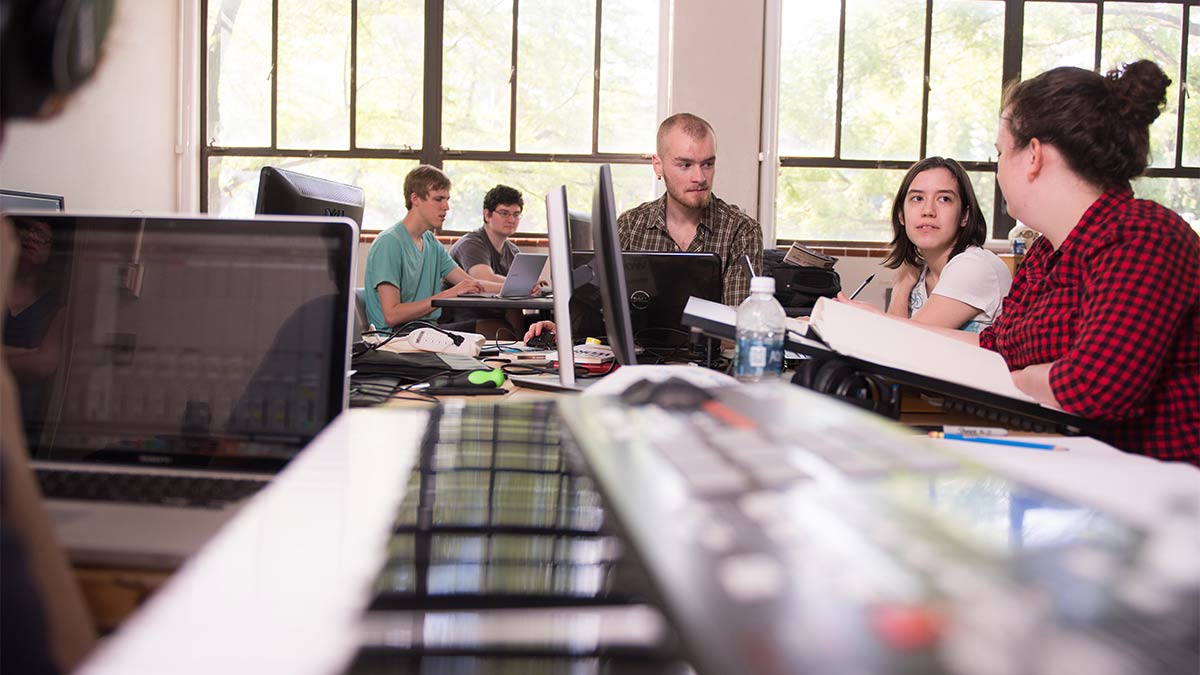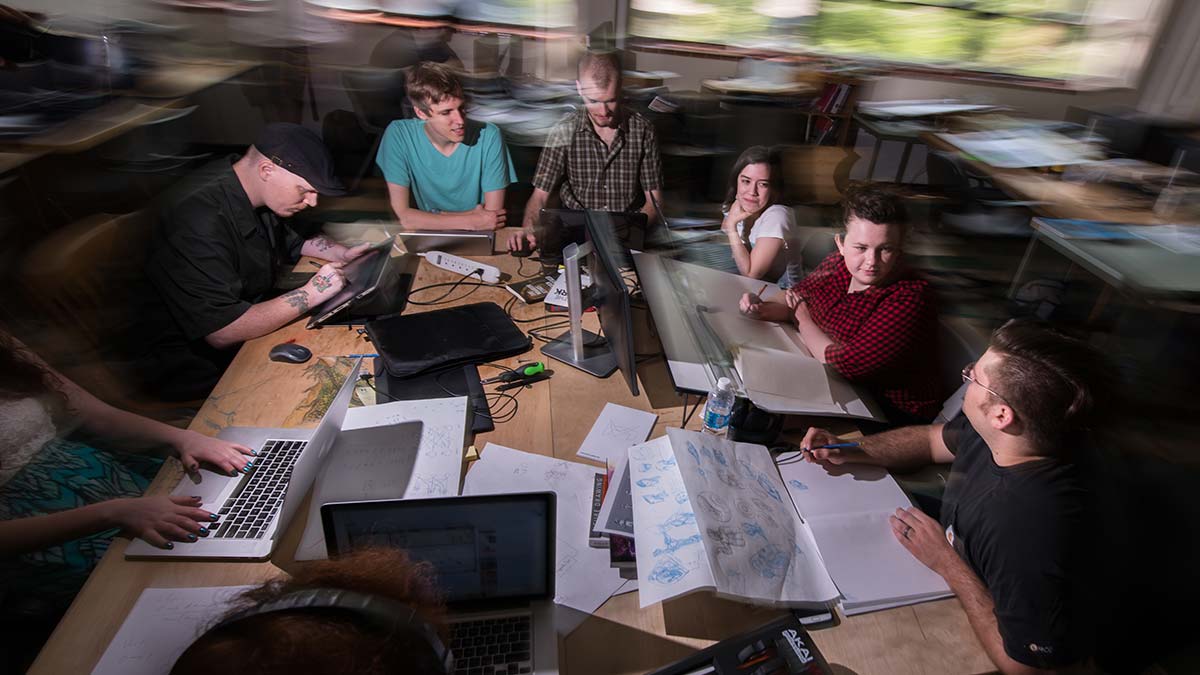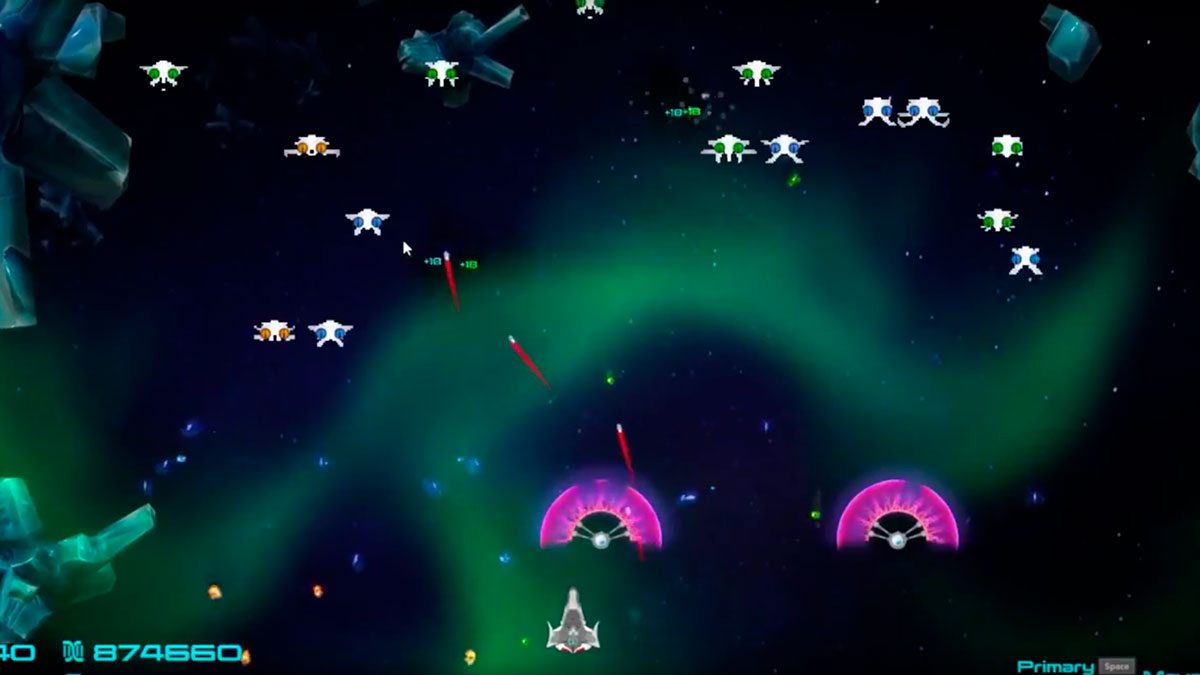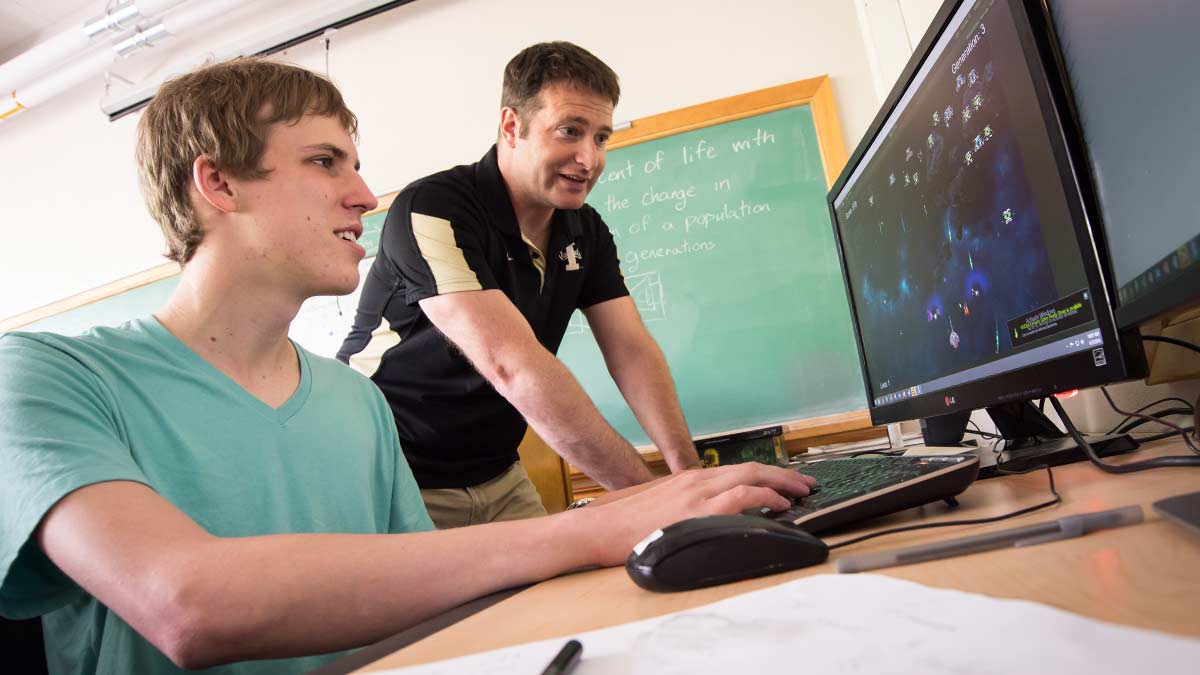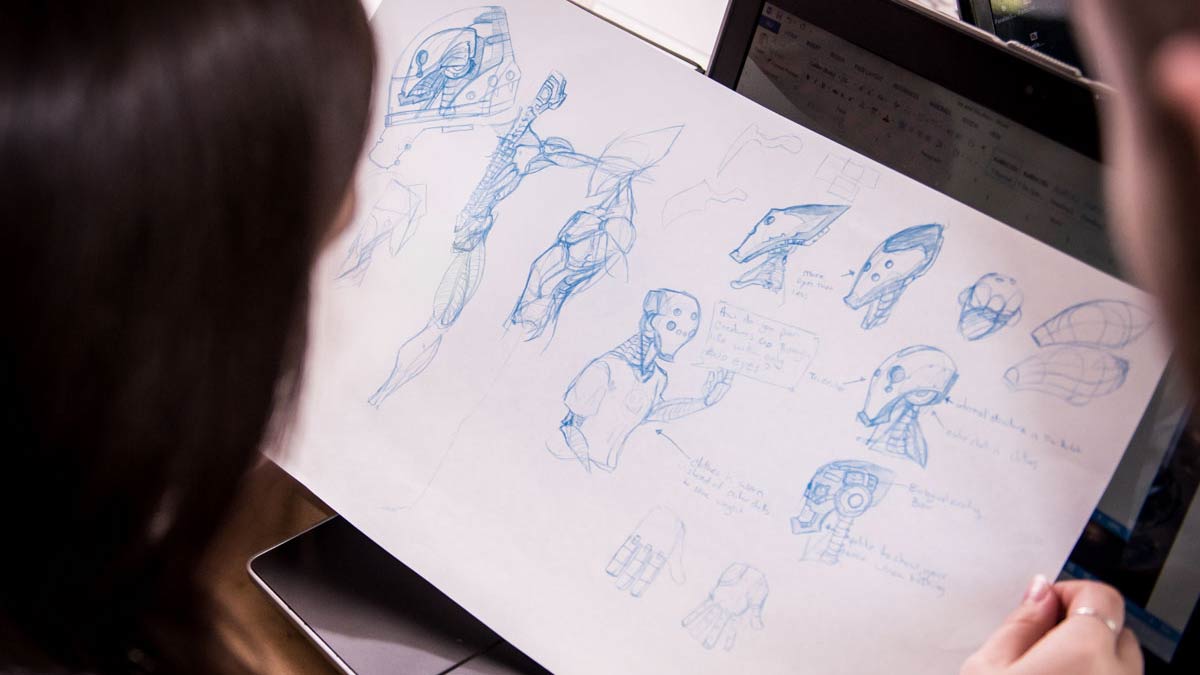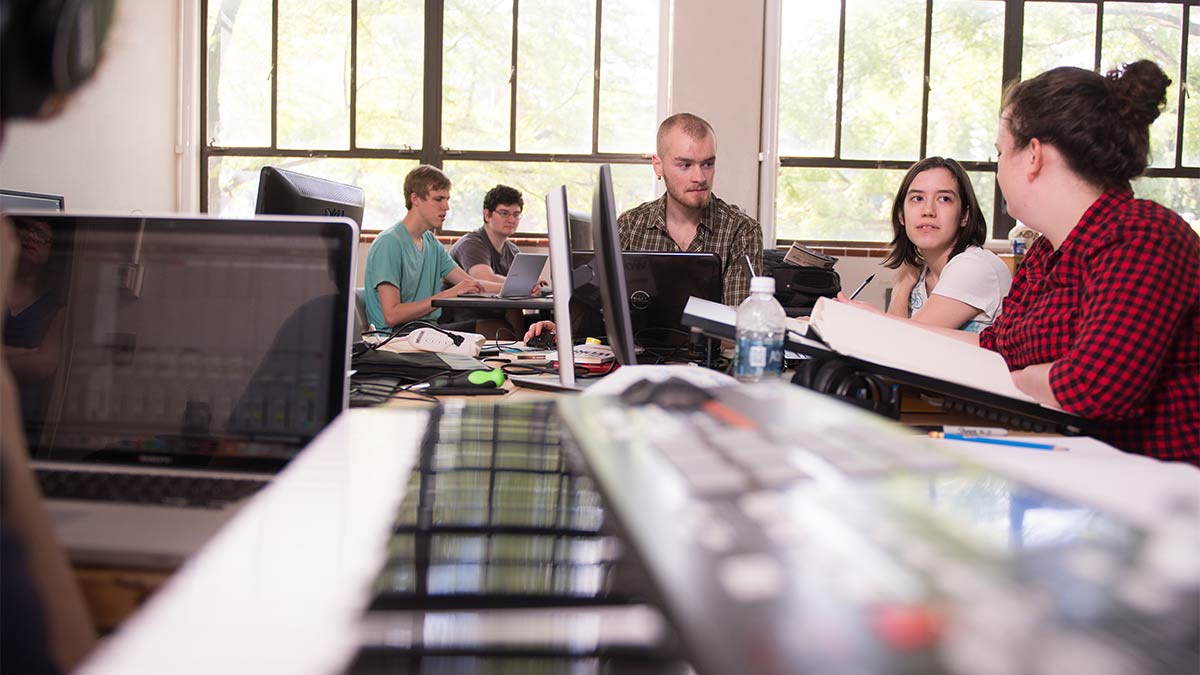Evolutionary Computation
Undergraduates from across disciplines team up to bring evolution to video games
A horde of bug-eyed, tentacled aliens slither toward you, bent on destroying you before you destroy them.
The creatures in the Protean Swarm don’t just want to wipe you out of the galaxy. They want their offspring to defeat you, too.
And their offspring are going to be a lot harder to stop.
Every hit, every miss, every strategy, every action you and the aliens take shapes the next generation. Unlike the digital bad guys in arcade games of days past, these villains do more than get tougher to beat as the levels advance.
They evolve.
Nick Wren — who graduated from the University of Idaho in 2016 with a bachelor’s degree in biochemistry and is part of Polymorphic Games, the student-run design studio that brought the Protean Swarm to life — remembers the moment the team realized its creations were actually evolving.
“They’re not just becoming blue because it was random and because they wanted to. They’re becoming blue because that was the best strategy to beat the player,” says Wren, 23, of Lewiston. “Being able to actually prove that and show that was just a big, ‘Oh, this is actually going to work.’”
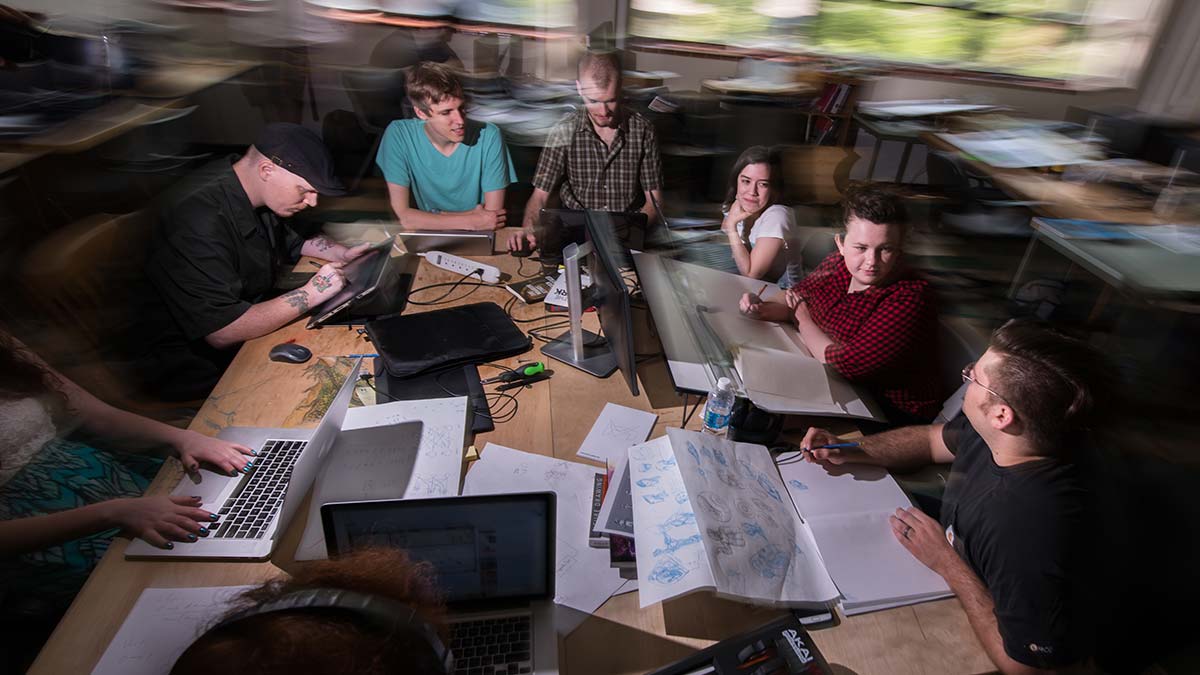
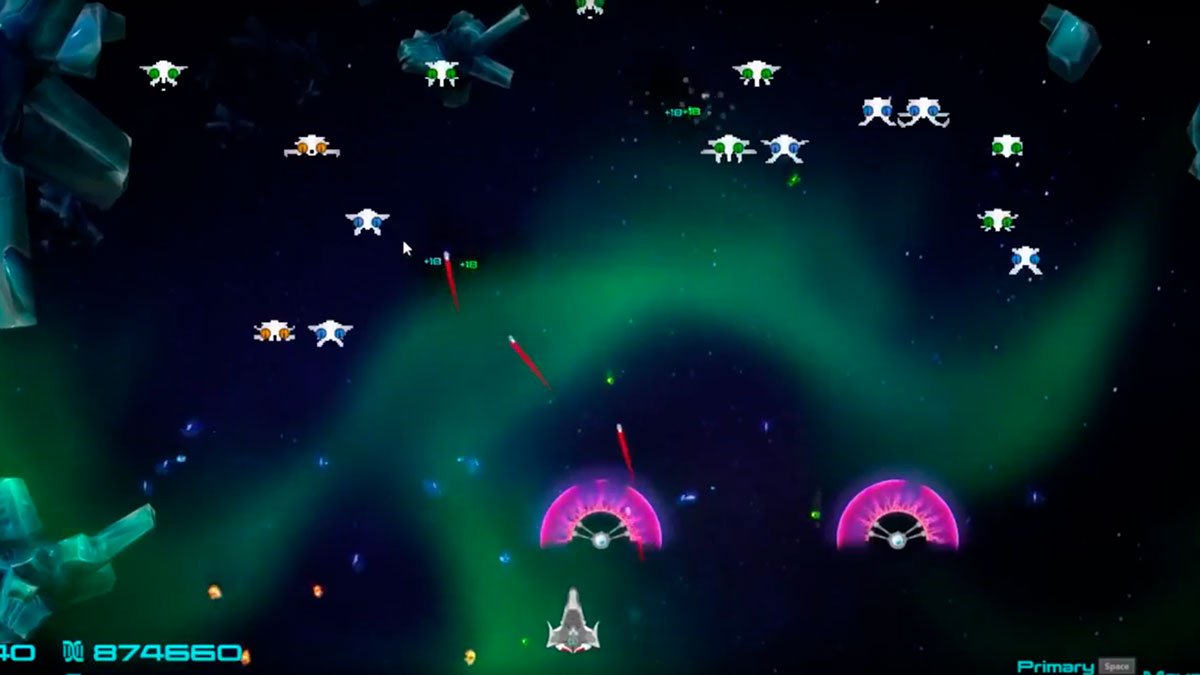
Origin
Polymorphic Games is unique among video game studios because of its combination of subject matter and people: Its games weave in principles of evolutionary biology, and they’re made almost entirely by undergraduate students.
“It’s like they’re almost starved for these kinds of experiences. They have all this talent, and they’re looking for a direction and an application. You give them that, and they do these amazing things.”Barrie Robison
“I wouldn’t want to do it with any other group,” says Barrie Robison, a biological sciences professor in the College of Science and a co-founder of Polymorphic Games. “It’s like they’re almost starved for these kinds of experiences. They have all this talent, and they’re looking for a direction and an application. You give them that, and they do these amazing things.”
The idea for the studio originates with Robison and Terry Soule, a computer science professor in the College of Engineering. Soule’s research focuses on using aspects of evolution to solve computational problems. In 2010, he started creating simple games that illustrated evolutionary concepts.
At the same time, Robison, a gamer and evolutionary biologist, started wondering what it would look like to use evolution to make commercial games more fun and challenging. When they realized their common ground, the professors began experimenting.
“We spent a year trying out prototypes to see how well they’d work,” Soule says. “We decided, based on those, that it was an idea that really had merit, but the two of us alone couldn’t do it.”
In 2014, they introduced an undergraduate class on evolution and games at UI. The project snowballed as they realized just how many elements go into creating an exciting, complex world — leading to the full-fledged summer studio that created “Darwin’s Demons,” the game featuring the Protean Swarm.
A $55,000 award from the National Science Foundation’s BEACON Center for Evolution in Action allowed Soule and Robison to get a head start on the project, and a $65,000 award from the inaugural Vandal Ideas Project laid the groundwork for summer studios in 2016 and 2017.
The 2016 team brought together undergraduates and new alumni in computer science, biochemistry, microbiology, English, music, broadcasting and digital media, and virtual technology and design. The project lead, graduate student Nicholas Wood, is studying integrated architecture and design.
Artist Peter Wangler, who graduated in May 2016 with a bachelor’s in virtual technology and design from the College of Art and Architecture, said he joined the studio precisely because of that unusual mix.
“I’ve never worked with a group that really pushed the boundaries of understanding where my job ended and where somebody else’s began,” says Wangler, 34, of Moscow. “It was interesting and fun and it mirrors more of what you can expect in reality outside of academic life.”
Polymorphic Games | U-Idaho’s Video Game Design Studio
The University of Idaho is home to Polymorphic Games, a video game design studio that uses evolutionary principles to create revolutionary games. Last summer, a team of students with specialties in computer coding, art, writing, music, videography, virtual design and biology created Polymorphic Games’ first commercial product, “Darwin’s Demons.”
Adaptation
“Darwin’s Demons” is Polymorphic Games’ first complete commercial production. The game resembles classic arcade games like “Space Invaders,” with modern twists like wailing guitar music, souped-up ships and otherworldly landscapes — and the added layer of evolutionary science.
The student team created “Darwin’s Demons” with remarkable speed. Just a few days into the summer, they’d already built a demo, but it was the beginning of a long process.
One of the greatest challenges arose where computer science met biology. The early game was playable, but it didn’t actually imitate evolution. How do you translate biological principles into code?
“Trying to program something that behaves in a way that copies the way something else behaves is really hard to do.” Zachary Yama
“Trying to program something that behaves in a way that copies the way something else behaves is really hard to do,” said Zachary Yama, who graduated in May 2016 with a bachelor’s in computer science and who first got involved in evolutionary games in Robison and Soule’s 2014 class.
Yama, 22, of Troy and fellow programmer Samantha Heck, 19, a computer science major from Post Falls, worked with the team’s biologists to create genomes for the Protean Swarm. Each creature has a genetic code that determines its appearance and characteristics like how quickly it moves, how often it shoots and what sort of projectile it shoots.
They then programmed guidelines that determine each creature’s fitness. An alien with a high fitness score is more attractive to its fellow creatures, increasingly the likelihood that it will pass on its genes to the next generation.
The player exerts the force of selection on the creatures: A sluggish and poorly armed alien is more likely to be targeted first, reducing its chance of reproducing. But the aliens can mutate, too, so there’s always an element of unpredictability.
While making all this work wasn’t easy, Yama says, programming video games is particularly rewarding for computer scientists.
“It’s the only real place where you can write a bunch of code and immediately, or almost immediately, see what you’ve done become a piece of something, become a product, become actually material,” he says.
The biologists were excited to see their knowledge come to life on screen, too. Spencer Gomez, a microbiology and biochemistry major in the College of Science, loved the opportunity to go from being a student in the lab to being one of the team’s leaders in his field.
“Here, I’m one of the so-called experts,” says Gomez, 20, of Coeur d’Alene. “I’m teaching other people the principles I’ve had to learn, and they’re teaching me their skills a little bit and incorporating things to create an end product that none of us would be able to without each other.”
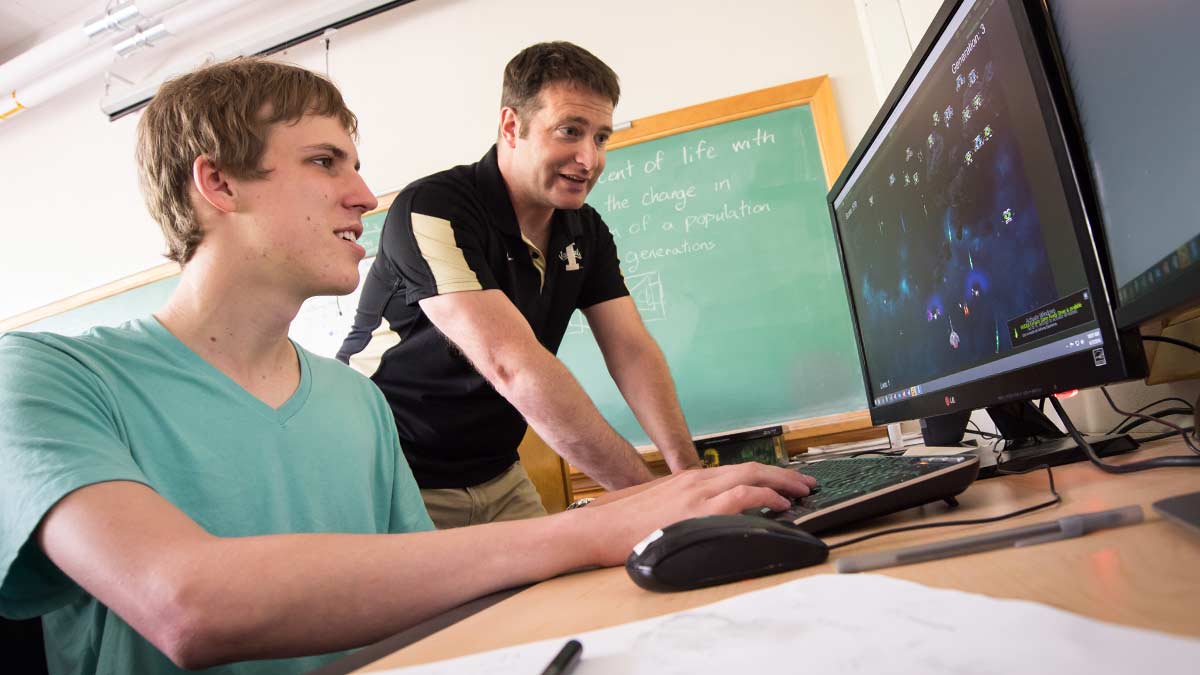
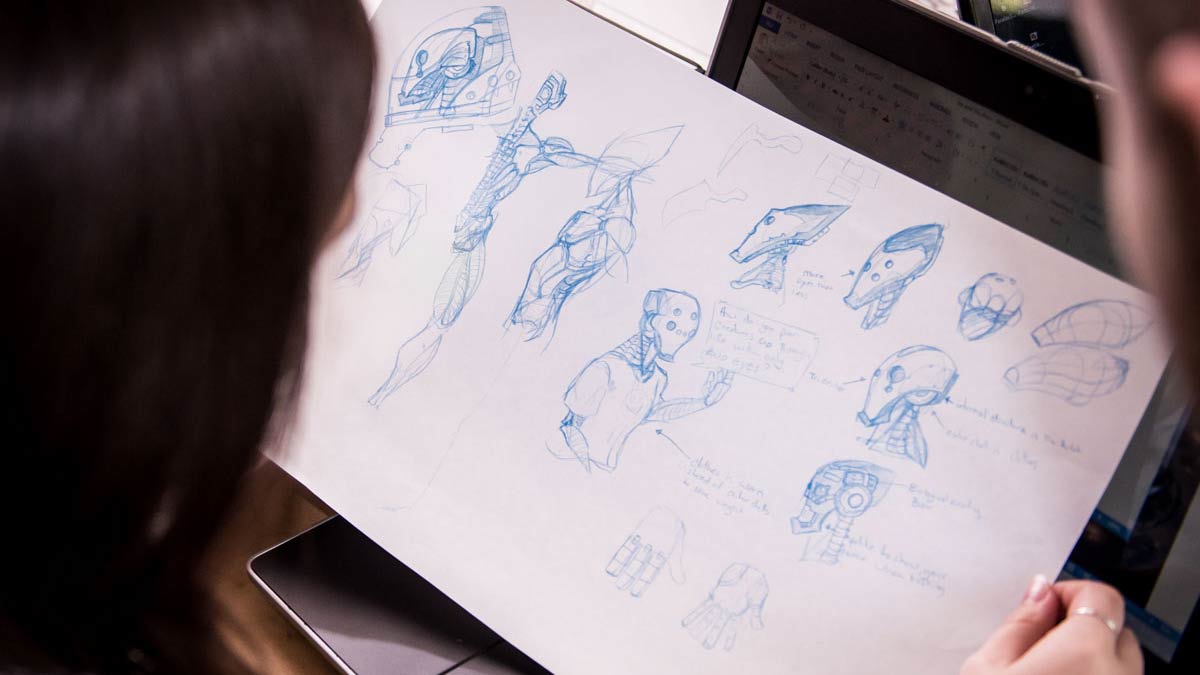
Character
Creating an evolutionary video game goes beyond the mechanics of science and code. Biologists bring data to the table and programmers put that data into action, Wood says, but the rest of the team makes it beautiful, interesting and — most importantly — fun.
“I’m supposed to make sure it’s a game, at the end of the day,” says Wood, 30, of Boise.
The designers, artists and writers on the team helped build the world of “Darwin’s Demons,” creating an elaborate backstory and character designs. Some of this work made it into the game, while other pieces gave the team a better feel for the world of the player and the Protean Swarm, infusing a story into the science.
“That gets everyone on the same page of what this world is, and if there are characters, this is what they’re doing, and this is what the circumstances surrounding this alien attack are,” says Emily Ward, a virtual technology and design major and the primary concept artist for the team. “We talk about that, then I draw stuff.”
Danielle Barney, an English major with a professional writing emphasis in the College of Letters, Arts and Social Sciences, put her creative writing experience to work for the world-building component, but also helped shape the part of Darwin’s Demons that helps players learn about the game’s science.
“It needs to be interesting and accessible, especially because this information is something really hard to communicate.”Danielle Barney
“It needs to be interesting and accessible, especially because this information is something really hard to communicate,” says Barney, 21, of Seattle. “There’s a lot of jargon involved with the sciences, and sometimes you need to step in and say, ‘Hey, I don’t know what that terms means, and I know a lot of our audience doesn’t know what that term means. Let’s take a step back. Explain it to me and then we’ll explain it to them.’”
The team’s goal was to create a game that draws players in with entertainment, then gives them the option to learn more about evolution as they see it emerge in the game.
“Why not let games really inform people and let people explore and start learning in a way they enjoy?” Wood says.
Descendants
Now that summer is done, some of 2016 Polymorphic Games team continues with the studio, others are focusing on their studies, and the recent graduates are hunting for their first post-college jobs.
Yama, who spent the summer interviewing with tech and game companies while working for Polymorphic Games, says some potential employers have been enthusiastic about his experience.
“They’re particularly excited that I know how to talk with an artist, or a digital designer, or anyone in that type of field,” he says. “They’re even more interested when I say I’m on a team who is shipping a game.”
With part of the team moving on, new spots will open in Polymorphic Games. Robison and Soule are already planning a project for summer 2017, and they hope to use profits from future games to pay for a perpetual summer studio, giving new opportunities to students for years to come.
Every student involved in Polymorphic Games emphatically encourages current and future Vandals to get involved with hands-on projects — whether programming a video game, designing an alien swarm or pursuing any experience that puts education into action.
“It’s fun, and you will learn an immense amount of material that will help you throughout life,” Wangler says. “There’s only one way to get this experience, and that’s to do it.”
Article by Tara Roberts, University Communications & Marketing
Images courtesy of Polymorphic Games artists Nicholas Wood and Emily Ward.
